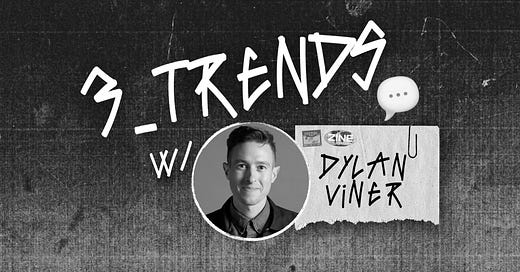3_TRENDS_Vol.14: Dylan Viner: Cultural Correctives, Mindfully Productive + Weird Outdoor-sy
Vol.14
3_TRENDS is an interview series with the world's leading cultural researchers and thinkers, sharing their favorite overlooked trends.
Dylan Viner (DV) is CSO and Partner at TRIPTK, a transformation consultancy that decodes and recodes culture for brands. Prior to joining TRIPTK, Dylan served as Deputy Head of Strategy at Redscout, and previously he…
Keep reading with a 7-day free trial
Subscribe to ZINE to keep reading this post and get 7 days of free access to the full post archives.




